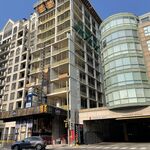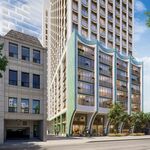More than prioritizing subways per se, we should look at alternatives. As long as these things are costing 300m/km we wont get any notable investment in them beyond a few token extensions.
The funny thing is that it doesn't cost 300m/km. The TTC has propped up the costs of subway building substantially, and realistically those figures should be peaking at 300m/km. I agree that there are tonnes of alternative RT design, and I've noted a few of the possibilities. A simple trench on the Richview corridor on Eglinton West, as well as a raised guideway along the 427/Dixie road stretch to the airport. On Don Mills north of Eglinton, a raised guideway could easily be put up in the centre of the street, which could substantially bring down subway costs (maybe under $150/km.) Same with Eglinton east of Don Mills, a guideway could easily be put up (though it might require more creativity with the corridor.) The only places that full-blown tunneling is needed is the Yonge Extension, Sheppard Extension and Eglinton section between Keele and Laird. There's contingency for more tunneling in other sections (like extending the tunneled portion of Eglinton or boring some parts of the DRL,) but there are practices that could substantially lower the costs of subways that the TTC simply hasn't looked into, which I consider very irresponsible.
Even in super dense cities like Manhattan or London, despite a definite lack of capacity, it has been near impossible to work up enough money to build new lines. The 2nd Avenue subway has been on the books since the days of Weimar. The only people who are really building full bore subways, like you see along Yonge, are in despotic places like China where they can just draw lines on a map and fund them infinitely.
Hmm, then I'm interested why New York's getting work started on the 2nd Avenue subway, and London's in the midst of starting a new Underground expansion project. Paris is also jumpstarting Metro expansion with a new plan including several extensions and some new lines, if I'm not mistaken.
The only reason the 2nd Avenue subway has been out so long is because when the project was looked at in the 80s and early 90s, the government was in no mood to invest in either New York nor public transit. In the late 90s, it was stuck because it wasn't a new project, but it didn't have any government funding either, and it ended up taking a long time to get the public and politicians to remember how important the line is.
As for those "despotic places like China," I'd like to point out that China still has to get their raw materials from somewhere, which the government ends up buying. They don't starve their workers either. The reason they're building all these lines is because China has been in dire need of public transportation infrastructure for almost 50 years, and the Chinese government is putting massive amounts of money to make China and it's cities more sustainable and environmentally friendly. Not to mention that per capita, China has something like 1/5 of the GDP of Canada, yet is still able to provide all this funding.
To that end, we need to look at how to keep the best aspects of subways (high speed, developed stations, quick boarding ect...) while trying to bring the costs down to more manageable levels. Rapid transit construction in other jurisdictions has consisted quite overwhelmingly of smaller, cheaper systems. Copenhagen's new metro uses driverless light metro technology, London's DLR system, Turin's new metro, Vancouver's new Canada Line, Oslo's metro, a solid chunk of Taipei's metro all use smaller systems. Transit mad places like Singapore and Hong Kong are moving away from full blown subway because of the costs. Even in Madrid, a lot of their recent expansion is built more along this kind of approach than massive subways designed to haul tens of thousands of people an hour.
The reason is because these lines are supposed to be significantly lower capacity. In the case of the DLR, it's not supposed to be one of the main lines. It's supposed to create a network to provide a service to a specific area, not a main line like the YUS, B-D, DRL or Eglinton.
Oslo and Turin both have populations of less than 1 million, and Oslo already has a large network of Trams and Regional Rail.
The reason places like Hong Kong and Singapore are moving away from larger capacity systems is because they really don't need it. Both those cities already have huge networks, and the new lines are supposed to extend service rather than provide a huge additional capacity.
The SRT was a good step towards this goal, but it got stymied by autarchic politicians and questionable design choices. Despite that, its had fairly good success in Vancouver and, from what I understand, parts of Asia.
I actually can't believe this. You're saying that the SRT was a good thing?! Was it better than extending the B-D to STC? The lack of logic and common sense here is starting to surprise me.






